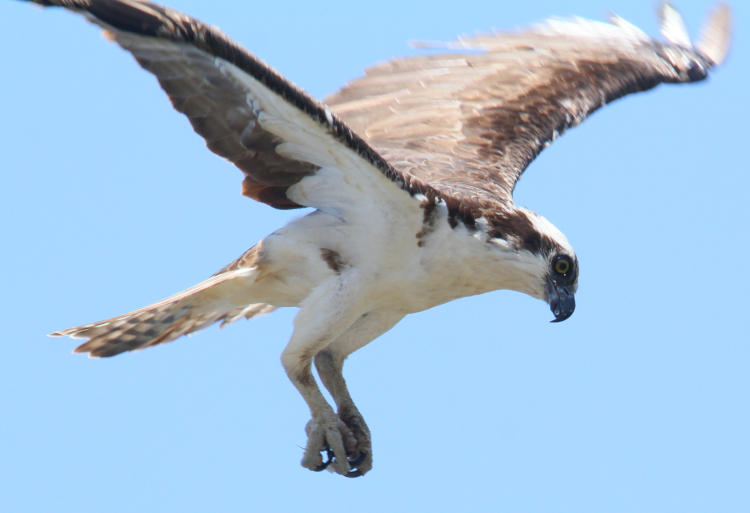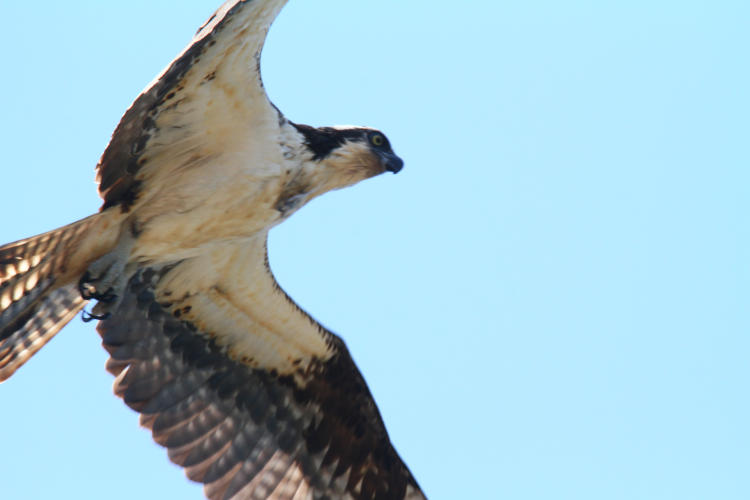
My photos here – and there will be a lot of them – are all of three individual ospreys (Pandion haliaetus,) and all taken within an hour. And this is just a representative sampling. I stopped at Jordan lake yesterday because I hadn’t been in a while, and three ospreys were wheeling and fishing, very actively, just off the shoreline where I stood – the image above is full frame as one passed almost directly overhead. In fact, I got enough frames to identify individuals: this one can be distinguished by the dark patch of feathers on its throat.
It’s the right time of year, so I’m 90% certain most of this was hunting to feed the young in nests, especially since they tended to return fairly quickly after a successful capture, indicating that they were simply dropping off meals for the other parent to tear up and feed the young – I can’t say for sure if it’s virtually always the father that hunts and the mother feeding, or if they take turns, and osprey are not readily distinguishable by sex.
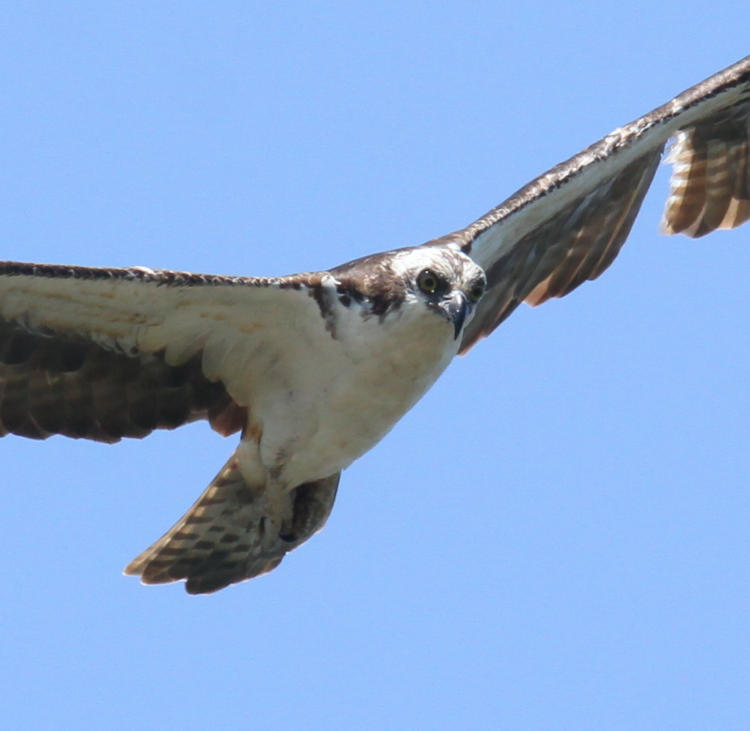
This is one of the others: no dark patch on the throat, but a single-feather gap in each wing indicating an ongoing molt, which is common enough. Because of these distinctions, I could tell any time this one returned quickly after catching a fish.

It was around midday with the sun high in a near-perfectly clear sky, but a bit windy so the lake surface was choppy, which either did not hinder them much or perhaps even helped in some way; I know the stiff breeze meant less effort in wheeling overhead. There were two distinct behaviors to indicate when action might occur. The first was the talons dropping low from their normal flying position up against the tail, meaning either an imminent dive for a fish or a territorial dispute, and the second was ‘backing,’ arresting their forward motion to achieve a near-hover as they locked onto a fish below, seen here.
By the way, even with the three of them in a surprisingly close space, there were absolutely no territorial disputes, though on a couple of occasions I heard limited cries, usually only used to claim airspace, and a couple of dropped talons when not even over water – they seemed to be ready to claim or defend, but too preoccupied to follow through.

And then the dive, which at least half of the time came up empty, but still a lot of fun to watch. I can only estimate my distances, but the cruising/observing altitude was generally less than 30 meters above the water, and distance from me never more than 150 meters, usually far less – I have a few frames where I suspect the osprey was inside the 10 meter focusing limit on the big lens as they cruised overhead. I had the limiter set at ‘Infinity to 10 meters’ to reduce autofocus hunting, which definitely helped, but there were a lot of frustrations too.

For instance, one of the things that I’ve been after, for years now, is a decent frame immediately preceding contact with the water – like this, only not like this. Here’s what hampers these efforts:
1, Autofocus really, really wants to switch to the background as the bird crosses the horizon line, and I have not yet found a way to thwart this;
2, Manual focus is out of the question – I tried this day for a very short while, and the ospreys were varying distance far too much to track effectively;
3, Per Newton or somebody anyway, the dive accelerates, more so as they fold the wings in, so tracking them downwards (especially at high-magnification, long focal lengths,) becomes trickier, not at all helped by the horizon/focus thing above;
4, Exposure compensation was set for the sky – I think all of these frames were 1 full stop overexposed (from what the camera thinks is proper, anyway.) However, as seen above, when the sky is lost and the background turns to dark trees, the exposure becomes longer and motion blur is an issue;
5, Image stabilizing only goes so far, and quick movements at 600mm are enough to overcome its benefits;
6, I tried backing off from 600mm, which actually helped a little. Even though the osprey was smaller in the frame and thus harder for the AF to resolve, it was easier to keep more centered and focus wandering was thus reduced a little.
[I’d considered doing video of this too, and believed yesterday that I’d missed my opportunity by not bringing along the tripod and gimbal head – but the 7D does not do live autofocus with video, and so, as above, focus would be off far too often. But perhaps I’ll try with the camcorder…]
Given all that, this one was close, though:

Would have been better a little later (like 1/4 second or so – things happen quickly at this point,) but at least the AF and exposure played nice this time. In fact, this immediately followed:
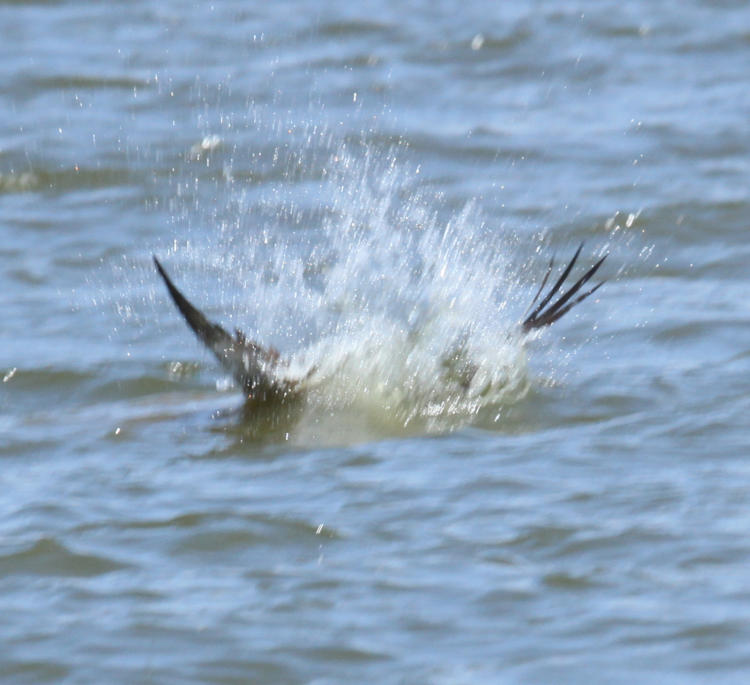
Unlike pelicans or gannets, osprey tend to hit fish near the surface, and often arrest their submergence with their wings. I’ve never been in a vantage where I could see what they were diving after – I’d probably have to be above them when they started their dive, obvious difficulties with that – but I’ve always had the impression that they don’t even approach a meter in depth.
And I have plenty of images after splashdown, when the osprey rises from the water again with a fish:
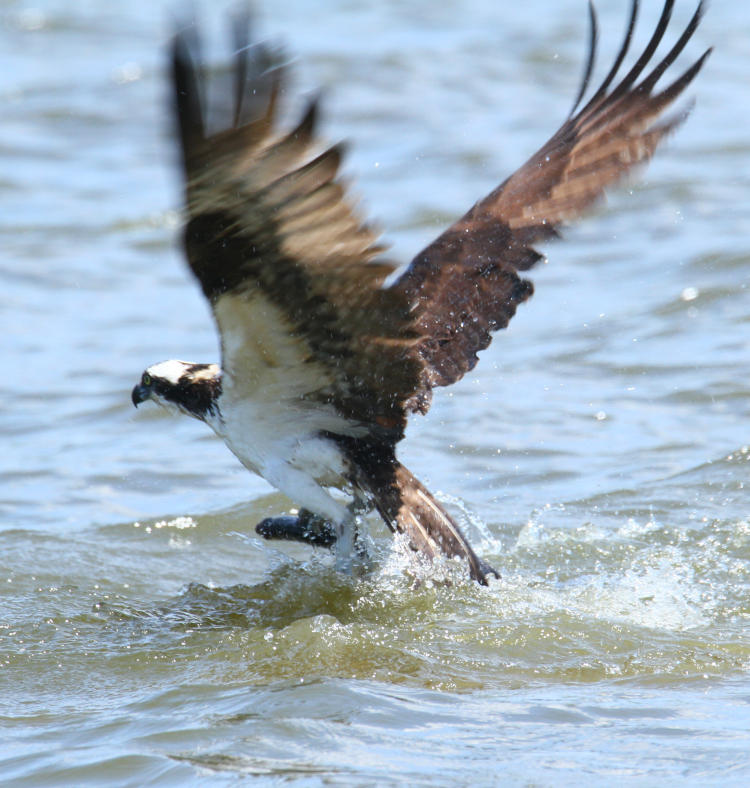
And this, very dynamic:
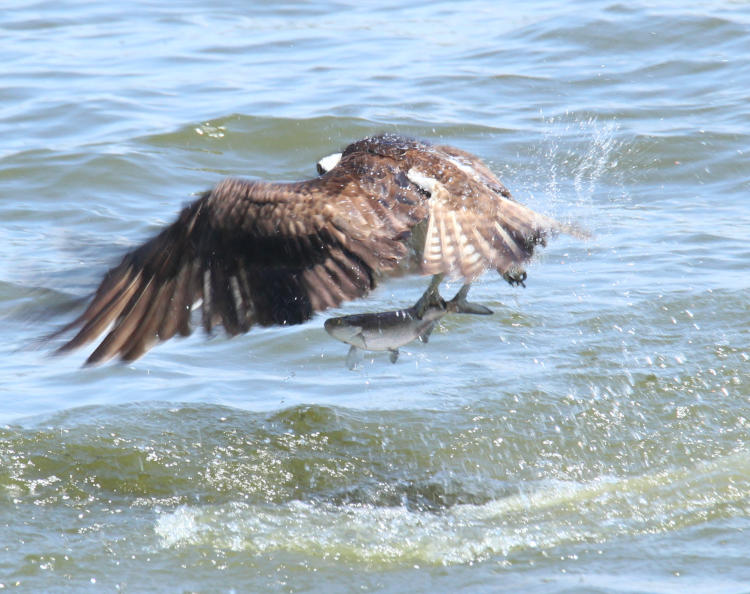
Each time they lift from the water and fly off, with a fish or without, they gain about 4-8 meters in altitude and a proper airspeed before they do a hard shake to rid themselves of excess water, which always results in a small loss of altitude and odd poses when frozen by the camera:
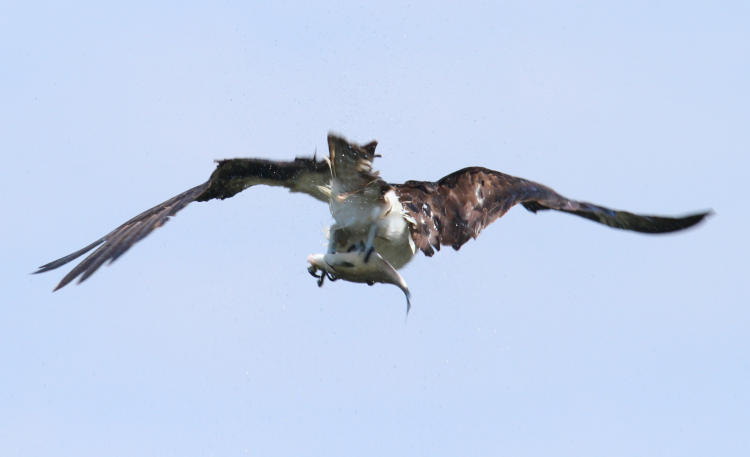
And while they missed a lot of dives, they also caught a lot of fish.
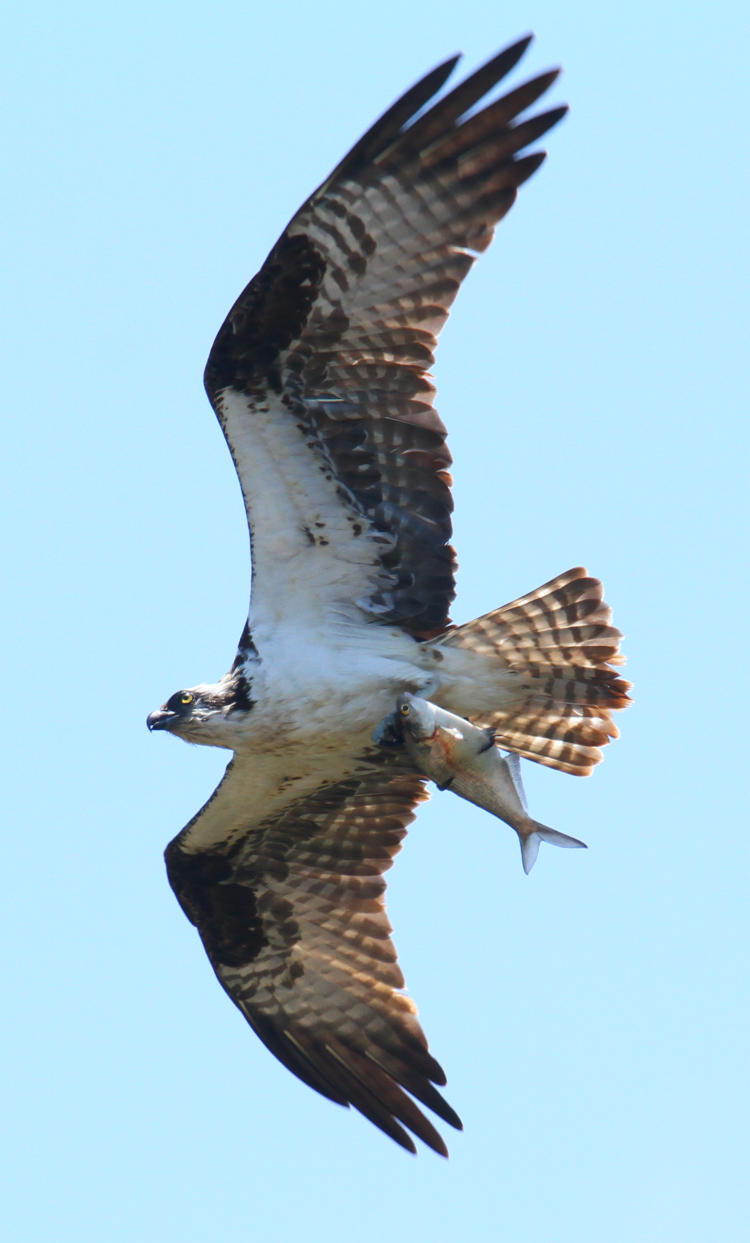
And another:
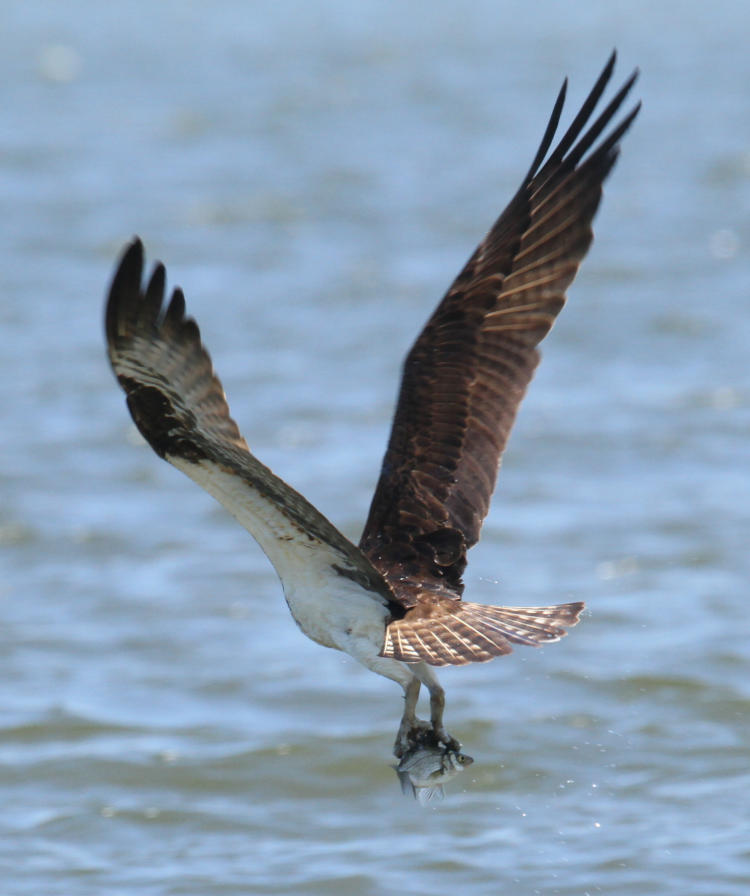
We’ll go in closer on this same frame, to let you try to identify the fish species:

I don’t known fish at all, and don’t feel like looking it up – it is, by this point, bird feces anyway.
We need another sequence to show a little detail:

The osprey is looking a bit waterlogged here, and was taking a bit of time to climb back up out of the water – which they actually do amazingly well, flapping straight up into the air without preliminaries. This one had a reason for the delay, though.
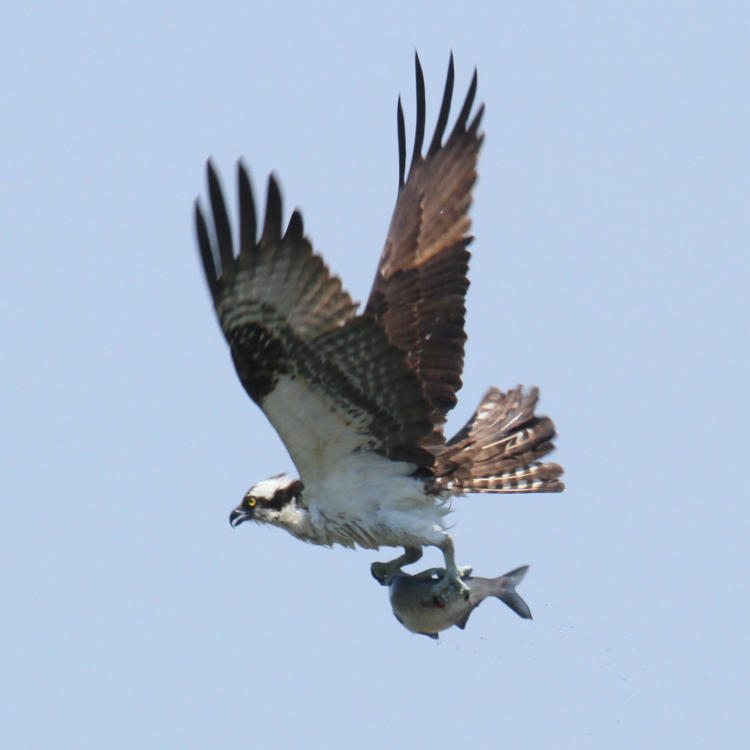
This isn’t the best view – that’s coming – but the fish is pretty big and obviously a bit of weight for the bird to handle. Know that birds are a lot lighter than they look, being more feathers than flesh and having hollow bones, so the fish may have weighed nearly half what the osprey did. But note the blood on the side of the fish.
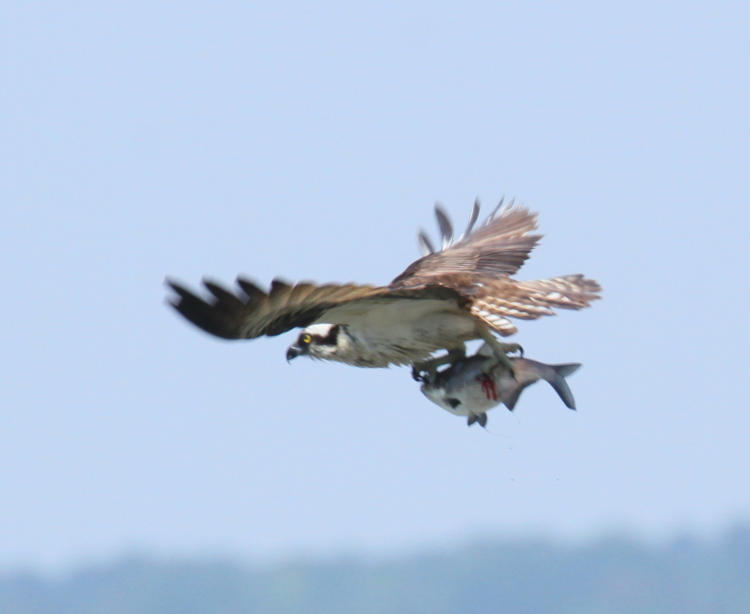
These photos are sequential and, I’m almost positive, at the lower frame rate of the 7D which is 3 frames-per-second – the EXIF info seems to agree, plotting these all within the same second.
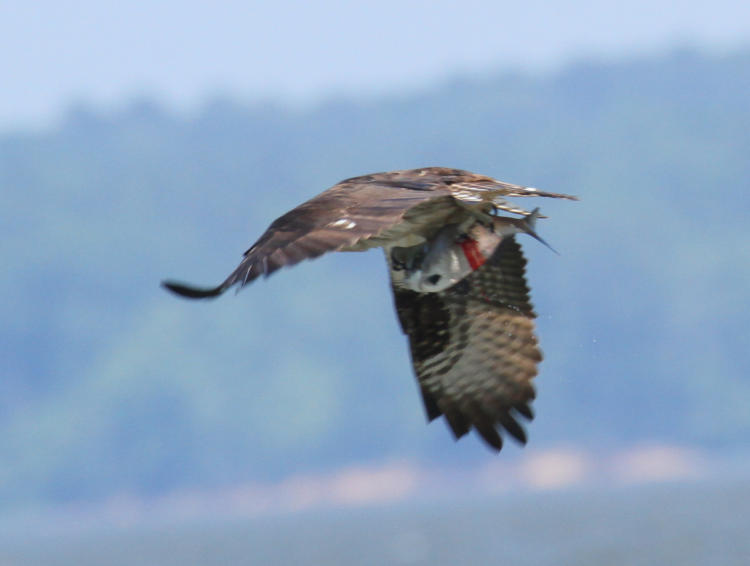
I rarely see blood on the captures of osprey, partially because the birds’ talons remain deeply embedded and close the punctures, but this one’s bleeding copiously, a few seconds after capture.

The osprey was extremely cooperative in circling around and doing a pass right in front of me – they knew I was there, occasionally glancing down at me as the shutter/winder whirred away, but not otherwise concerned. The fish can now be seen with a blood trail off of the tail, and the size of the fish is more apparent. I’ll let you contemplate the size of the crop and stomach within this bird, but there’s a good chance this was food for two adults and two to three bebbies. Even with that, they were eating well.
[Another note about frame speed: the 7D can also do a high-speed rate of 8 frames-per-second, which I rarely use because frame speed is only a marginal benefit – timing works much better. It remains possible that at the 8 FPS setting, the autofocus wouldn’t wander as much because there’s no time between frames for it to re-register the scene on the sensor, but it also means that the viewfinder is virtually blacked out entirely and tracking the bird accurately would be impossible anyway. Still investigating options.]
By the way, I mentioned that several birds glanced down at me as I stood on the water’s edge, and this is one of them:
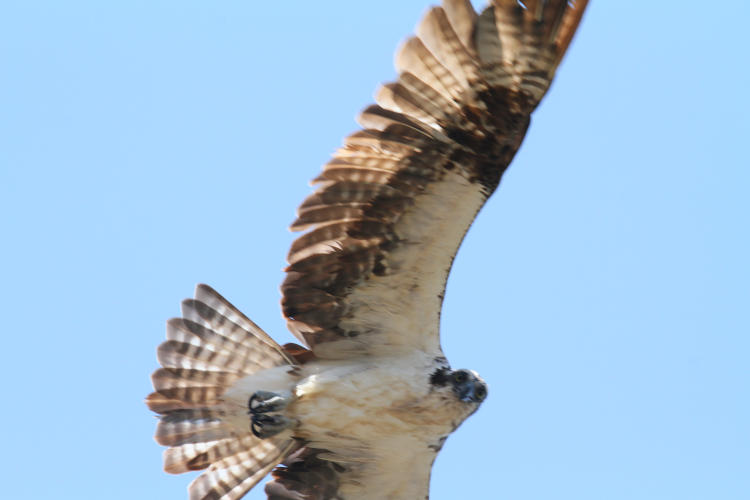
Somehow, dog only knows how, not one of the frames I took as they did this remained in sharp focus. It’s possible that some of them, this one included, were because the birds were actually too close – this is full-frame at 483mm focal length, so…
Birds have an oil they secrete and spread around their feathers to waterproof them, but there appears to be a limit, and my subjects yesterday were exceeding their limits.
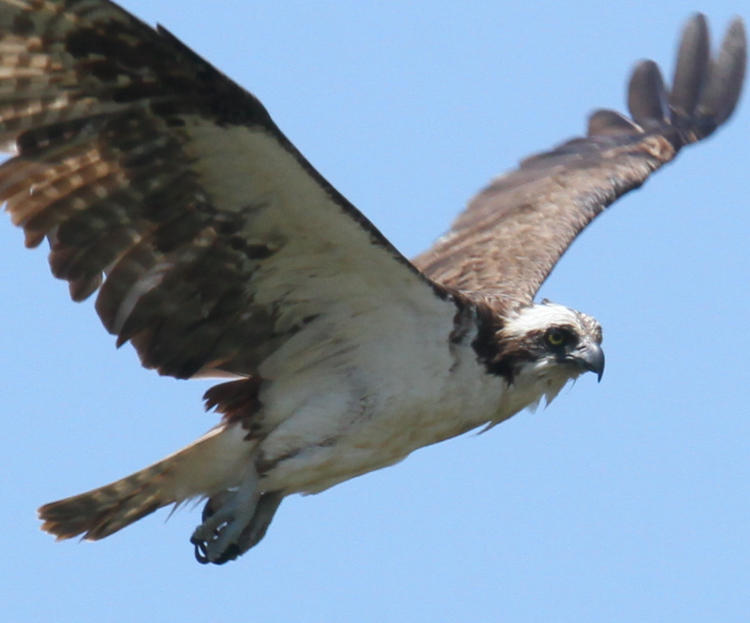
That’s one wet-looking bird, but the temperature was balmy and no rain forecast for a few days, so no risk at all. But I imagine quite a bit of preening was going on later in the day.
A launch:
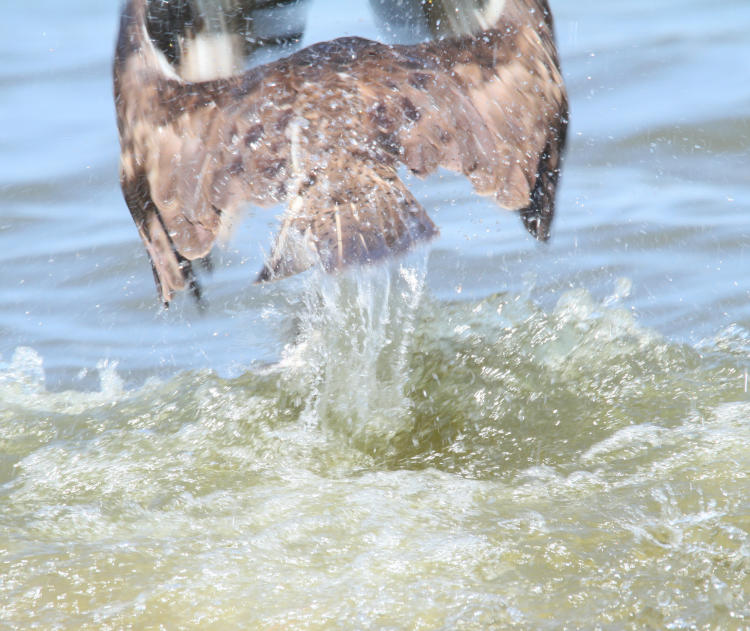
And subsequent frame with dynamic water droplets:
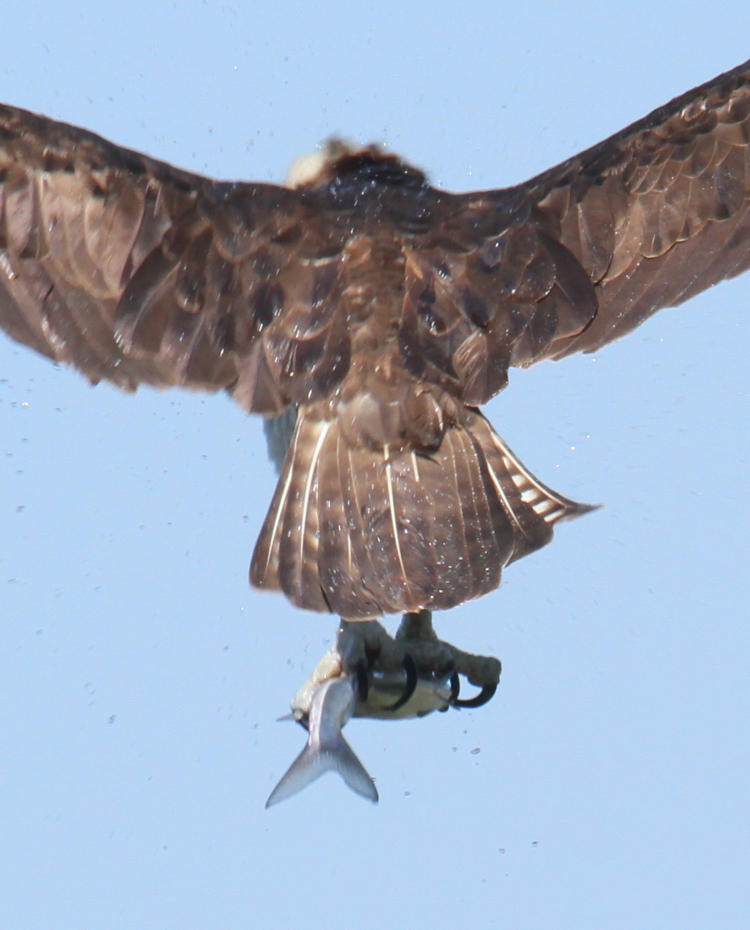
Sure, I’d rather this be from the front, which is extremely hard to accomplish – they virtually never face shore when fishing – but I’m not discarding this frame because of it.
I’ll also point out that, especially at this short a distance, the range of sharp focus isn’t huge – look at the tail feathers, and then at the head…
A quick one because I liked the peek:
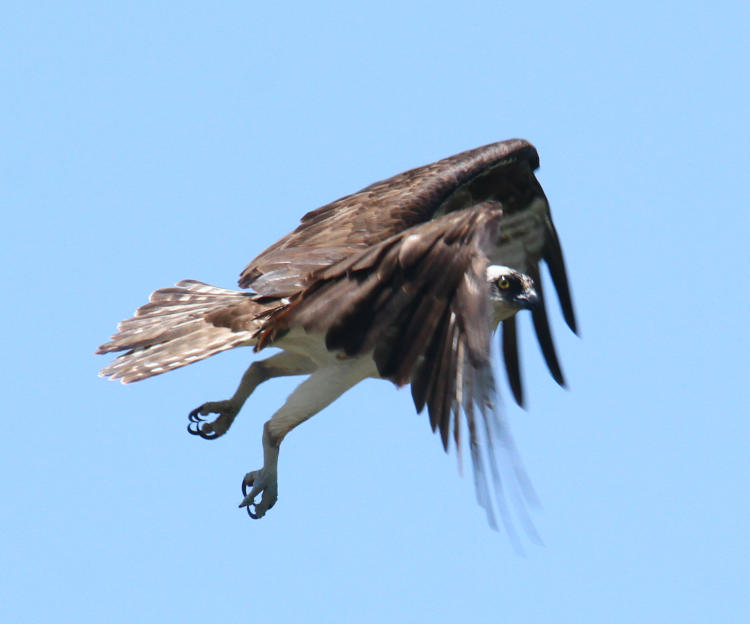
This one was backing, and thus should have been looking at the water, but it may have just abandoned the maneuver and not yet resumed a gliding flight. There were plenty of false alarms.
I haven’t yet sorted what I’ve taken in the past few days, and I know there will be a lot of discards, which is fine – I have enough keepers. I want to show this particular one off.
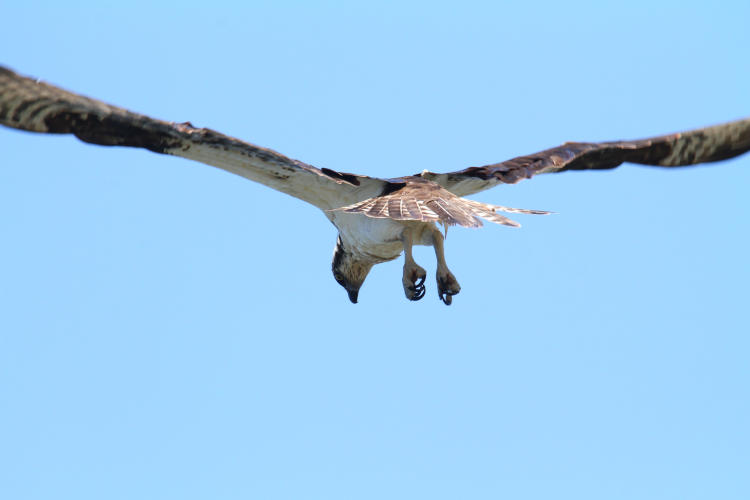
This is full-frame at 600mm focal length, with the talons dropping as the bird contemplated a dive. Clicking on the image with take you to a full-resolution crop, and you want to do that because the detail from an airborne bird is almost disturbing – you can make out the scales on the legs! I’m pleased with it, is what I’m saying.
On my initial unloading, hoping to see some specific things, I was a little irked to find I’d missed some of the frames that I thought I might have caught this time, but overall, I have more than enough to make the mere hour spent down there worthwhile, so I’m good with it. And know that I discarded a few resized images that I’d prepped for this post, too. 26 is enough.
